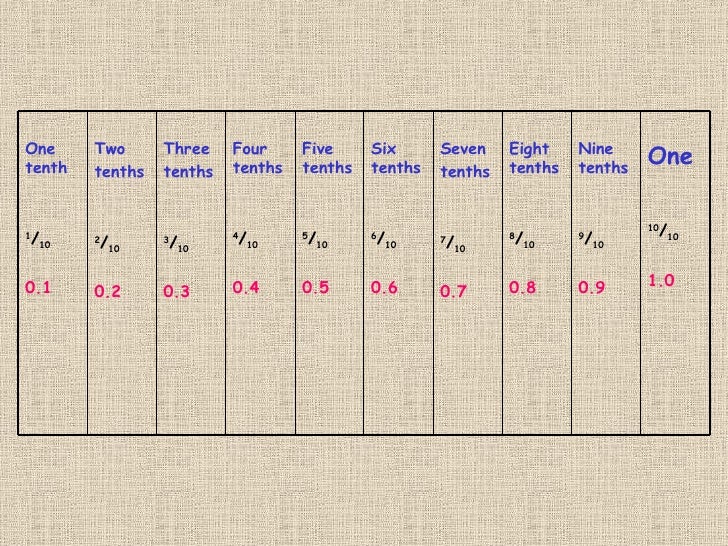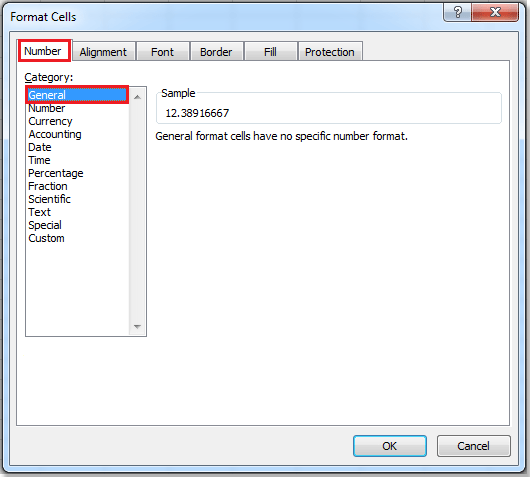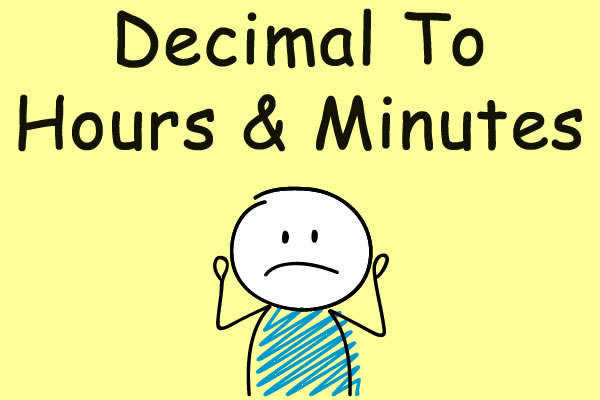To calculate the actual time worked, you need to total the hours and minutes between your employee's starting and ending times for each workday. The timesheet below provides a good example of the information you'll start with before converting minutes to decimal form. If you are an employer with multiple hourly workers, it can be challenging to calculate pay if they work only a fraction of an hour. To pay employees working for partial hours, you need to know how to convert minutes for payroll.
Failing to convert minutes when calculating pay causes errors and creates more work on the back-end. However, it's simple if you know how to express minutes as decimals. Once time worked is converted into decimal form, such as 4.35 hours, you can multiply by the pay rate and find total wages due. Contrary to what some find difficult, converting minutes for payroll is easy. It just depends on whether you use rounded or actual hours worked, how you track working hours, and what tools you use to calculate.
Your main goal is to translate time worked into decimal form, so you can multiply by your employee's pay rate and find how much you owe in wages. To be sure you're not over or underpaying your employees, you must convert minutes worked into decimals. To perform the conversion, you can use payroll software like Gusto, an online time calculator, free minute conversion chart or a Google Sheets Minute Conversion Template. In the two examples we just reviewed, the difference between converting minutes to decimals the wrong way versus the right way is that you short pay an employee for $3.52. Although you can convert seconds to minutes and seconds in Excel, it can be a bit tricky to convert and display times in combined units . Because time is calculated in Excel as a fraction of a day, you can convert fractions to appropriate time increments by combining calculations and custom number formatting.
Another common type of decimal time is decimal hours. In 1896, Henri de Sarrauton of the Oran Geographical Society proposed dividing the 24 hours of the day each into 100 decimal minutes, and each minute into 100 decimal seconds. Although endorsed by the Bureau des Longitudes, this proposal failed, but using decimal fractions of an hour to represent the time of day instead of minutes has become common.
Convert Tenths Of Hours To Minutes Chart Are you interested in how time is properly converted from hours and minutes to decimal format for payroll? We'll review and compare these two common formats for displaying and expressing time. Converting minutes to decimals is as simple as dividing minutes by 60. The good news is you can skip that step if you use our minute conversion chart.
In the chart, simply find the minutes worked, between one and 60, and the decimal equivalent will be to its immediate right. For instance, the decimal equivalent of 1 is 0.02. Once you have the decimal, add it to the number of hours worked.
To convert minutes to hours, divide the number of minutes by 60, which is how many minutes are in 1 hour, to get the equivalent number of hours or fraction of an hour. Time, of course, is an exception because it's based on 12. The day and the night are each 12 hours, while hours and minutes are divided into 60 .
While we can all calculate times quite easily, converting the 12-based system into the 10-based decimal system can often be a chore. A great way to track employee hours and convert minutes to decimals is by using payroll software. It would be very desirable that all divisions, for example of the livre, the sou, the toise, the day, the hour, etc. would be from tens into tens. Further, the new tierce would be divided into 1000 quatierces, which he called "microscopic points of time".
He also suggested a week of 10 days and dividing the year into 10 "solar months". Time can be expressed either as fractions, decimals, or as minutes and hours. In order to calculate payroll, time needs to be in decimal form so that it can be multiplied by an employee's pay rate.
Some decimal time proposals are based upon alternate units of metric time. Just as standard time uses the metric time unit of the second as its basis, proposed decimal time scales may use alternative metric units. You can combine calculations and custom number formatting to display minutes and seconds in Excel.
If you or an employee used custom time formats in Excel, you can convert them to decimals simply by changing the format. Highlight the cells, right-click them and then select "Format Cells." Under the Number tab, select "Number." To convert from 1.75 decimal hours to hours and minutes, we need to convert the .75 fractional hours to minutes. Read on to learn all about converting minutes for payroll, including payroll conversion steps to follow and methods for tracking converted minutes. I know I'm asking a lot here but could you explain how to convert "Duration in seconds " to a readable format of years,months,weeks,days,seconds in Excel? I see all sorts of ways to convert date to date, etc but not "duration" of time in seconds!
I need a way to convert it into a readable format of years, months, weeks, days, hours and seconds. I can do it in Perl, C and others but not in Excell. In general, there are two ways to convert time to decimal in Excel - by changing the cell format and by using arithmetic calculations or Excel time functions, such as HOUR, MINUTE and SECOND.
Further on in this tutorial, you will find the detailed explanation of the first way and formula examples demonstrating the other technique. The tutorial demonstrates different ways to convert time to decimal in Excel. You will find a variety of formulas to change time to hours, minutes or seconds as well as convert text to time and vice versa. Up until now, we've only discussed how to get answers written in hours.
However, since time is often written as hours and minutes, it's nice to know how to do this too. To start, just convert your minute measurement into hours like you learned in the section above. Among the gifts the ancient Greeks bestowed on civilization, the familiar circular clock face and the hour, minute and second system of measuring time are among the most important. You have to do a tiny bit of extra math if you want to express the fraction in hundredths, which is usually more useful than a raw fraction. Now you're ready to use the time you converted into decimal form to calculate how much you need to pay your employee.
Let's assume the employee's hourly wage is $14.25. The differences that arise with rounding your employees' working hours can add up over time. In our example, it was in the employee's favor, which meant you would be paying for more time than was actually worked. Converting time to decimal format just involves basic division. There are 24 hours in a day, 60 minutes in an hour and 60 seconds in a minute.
The TIMEVALUE function automatically converts the given time value to a number. You can then use this number and simply multiply it with the total number of hours in a day. This will give you a decimal representation of the number of hours in the given time value. Another method uses simple multiplication of the time value with the number of hours, minutes, and/or seconds in a day. Time values in Google Sheets are stored internally as decimal values, where 24 hours are represented with the value, 1.0.
Therefore to represent one hour, we use the value 1/24. So, to convert the time value to a decimal using this method, we need to first get hold of its internal value using the TIMEVALUE function. Our free minute conversion chart will show you the corresponding decimal for minutes one through 60 to help you calculate gross pay accurately and quickly based on actual hours worked. You can use conditional formatting in Excel to highlight cells containing dates before today or within a date range before the current date. In a worksheet, you can use conditional formatting to highlight selected cells by filling them with a color based on rules or conditions. This type of formatting is helpful if you want to highlight past due dates such as invoices that are 30, 60 or 90 days overdue.
To convert seconds to minutes and seconds, you can divide the seconds by the total number of seconds in a day and then apply the time custom number format to display as minutes and seconds. To calculate actual hours worked, you need the total hours and minutes for each employee for the pay period. Instead, you need to follow certain steps for converting the minutes to a decimal. Keep reading to find out the correct way to convert minutes for payroll. Say your employee worked 10 hours and 13 minutes. You multiply 10.13 by their hourly rate to get their gross wage.
This is the incorrect way to convert minutes for payroll. There's a right way and a wrong way to convert minutes for payroll. If you're not converting minutes, you might be overpaying and underpaying employees. If you want to pay hourly employees for partial hours worked, you need to learn how to convert minutes for payroll. Aside from seconds , other units such as minutes and hours can also be used for time measurement. Explore different units of time and learn how to convert units of time through the given examples.
This online tool will help you convert decimal hours to hours, minutes and seconds. As you see, the formulas with cell references and corresponding text strings deliver identical results. Also, please notice the left alignment of time strings in cells A2 and A6 and right-aligned converted time values in column D. Click OK. Now the decimal hours have been converted to time format. Here are short and long conversion charts for minutes to decimal hours which can help people who are entering hours in hours and minutes. Not sure how to change a time in minutes to a time in hours?
It's easy to make this conversion task in just a few simple steps. As a general rule, dividing your number of minutes by 60 will give you the same time in hours. This is because there are exactly 60 minutes in an hour. We will discuss here about the conversion of minutes into hours. We know 60 minutes is equal to 1 hour, which is required to convert the measuring time from minutes to hours. Excel has several custom formatting options for duration of time, and it will recognize most times you enter, provided you use a colon between the hours, minutes and seconds.
Here we will show you step-by-step with explanation how to convert 1.75 decimal hours to hours and minutes. Working with Time in Microsoft Excel | Time Functions and Conversion Do you need to add or subtract time in Excel? Some time calculations are easy, but depending on how the time is entered, you may need to use the TIME function or formula to add or subtract time. For example, if you have 9am in B2, and in cell C2, you have 3, for three hours, you can't add them with B2+C2 and get the correct answer without the TIME function. If you need a way to convert minutes for payroll, you have a few options.
You can use a spreadsheet, utilize payroll software, or convert minutes by hand. The plan did not gain acceptance and was abandoned in 1900. The Toulouse Chamber of Commerce adopted a resolution supporting his proposal in April 1897.
Although widely published, the proposal received little backing. You can then use this number and simply multiply it by the total number of seconds in a day. This will give you a decimal representation of the number of seconds in the given time value. You can then use this number and simply multiply it by the total number of minutes in a day. This will give you a decimal representation of the number of minutes in the given time value. If you want to learn a few more helpful formulas to add and subtract times, calculate elapsed time and time difference, please check out other parts of our Excel Times tutorial .
I thank you for reading and hope to see you again next week. In payroll calculations, you need to multiply the employee's pay rate by the decimal form. If you're tracking your employee's time in Timesheets.com, you'll see both the numbers on the timesheet and just the decimal numbers on reports. Use this formula and the format menu to get duration in hours and minutes. Gusto tracks employee time and attendance and automatically processes payroll without performing any manual calculations.
Employees can clock in and out from their mobile devices and even monitor hours spent on projects to get a detailed cost report of wages, taxes, and more. There are other functions and calculations you can use to calculate time but the strategies we've used here are useful for many scenarios. Working with time can be tricky and if start times and end times are not entered correctly, you won't be able to calculate time differences. Here is the next time in terms of hours on our list that we have converted to hours and minutes.
If you plan to convert minutes yourself, be sure to use the three steps above and take advantage of the payroll conversion chart. Software calculates and converts for you so you don't have to worry about doing it yourself. Plus, most payroll software can integrate with time and attendance software to automatically import employee hours.
Converting minutes to decimals for payroll is simple. Next, add the converted minutes to your total hours. Your employee worked 41 hours and 7 minutes this week. Before you begin converting minutes, determine whether to use actual hours worked or to round hours to the nearest quarter. If you're calculating employee pay, you need to know how to convert payroll hours. If you don't convert minutes, it can cause a lot of payroll problems down the road.
For example, decimal days divide the day into 10 equal parts, and decimal years divide the year into 10 equal parts. Decimals are easier to plot than both minutes and seconds, which uses the sexagesimal numbering system, hours, months and days, which has irregular month lengths. In astronomy, the so-called Julian day uses decimal days centered on Greenwich noon.
Hi - I'm Dave Bruns, and I run Exceljet with my wife, Lisa. We create short videos, and clear examples of formulas, functions, pivot tables, conditional formatting, and charts.Read more. If your time formulas and calculations do not work right, time values formatted as text is often the cause. The fastest way to convert text to time in Excel is using the TIMEVALUE function. No matter which method of entering fractions of an hour, reports will display them in decimal format.


























No comments:
Post a Comment
Note: Only a member of this blog may post a comment.